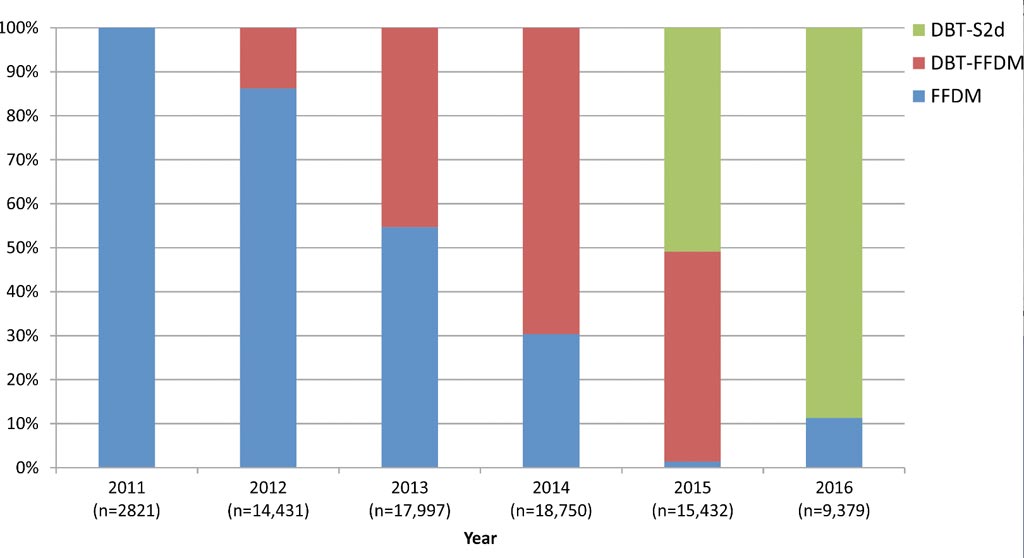New Technique Reduces Recalls for Breast Tomosynthesis Patients
By MedImaging International staff writers
Posted on 21 Feb 2017
The results of a new study show that a novel breast tomosynthesis technique using synthesized 2D compiled images of the breast may enable improved invasive cancer detection, and reduced radiation exposure.Posted on 21 Feb 2017
The researchers have shown that the new technique, called DBT-s2D, resulted in a 4.3% recall rate, compared to a 5.8% recall rate for patients undergoing screening using standard digital breast tomosynthesis and mammography.

Image: A graph showing the percentage of breast exams every year during the study period (Photo courtesy of RSNA).
The study was carried out by researchers at the Christiana Care Health System’s Helen F. Graham Cancer Center & Research Institute, and was published online in the February 2017 issue of the journal Radiology.
The results of the study suggest that a combination of s2D mammography and Digital Breast Tomosynthesis (DBT) could reduce the screening recall rate for additional examinations while providing the same levels of cancer detection. The new technique could also reduce the number of false-positive findings, and may make Full-Field Digital Mammography (FFDM) unnecessary.
Jacqueline S. Holt, MD, FACR, director Breast Imaging, Christiana Care Health System’s Helen F. Graham Cancer Center & Research Institute, said, "The adoption of s2D mammography combined with DBT into screening programs would limit radiation exposure to the patient, and, on the basis of our results, may improve clinical performance. If synthesized 2-D imaging is performed, you’ll get equal or better patient outcomes and go to a lower radiation dose. These findings could be a practice-changer globally. The downstream cost reduction when women don’t need to be called back for additional imaging amounts to millions of healthcare dollars saved. A lot of the controversy surrounding screening mammography is about false-positive findings. With this method, we are addressing this issue, optimizing patient care and adding value."














